Being China’s capital city, Beijing is full of incredible facets of its lavish history and culture. On a private tour, one can experience the local customs, treasured sites, and city history in their preferred way. The private tour incorporates traditional sites like The Great Wall of China and The Forbidden City and lesser-known areas that exude Chinese culture. There are plenty of stories to capture the attention of every visitor in Beijing. This article will describe the top sightseeing highlights of Beijing to aid first-time visitors in the charm of this exceptional place.
What are the must-see attractions on a Beijing private tour?
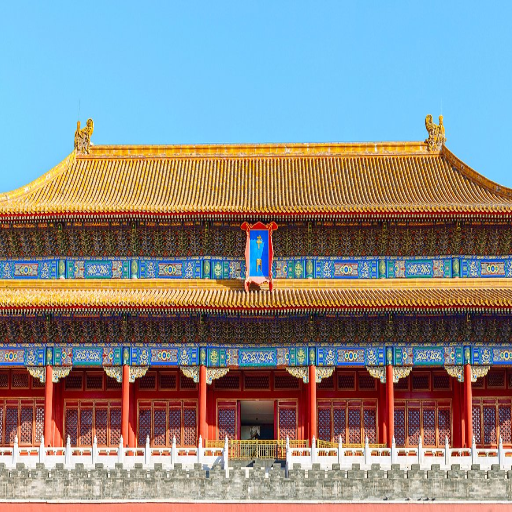
Exploring the majestic Forbidden City on your Beijing tour
The Forbidden City, or Palace Museum, is a world-renowned landmark in Beijing and a UNESCO World Heritage site. It has approximately 1,000 conserved structures and over 8,000 rooms covering an area of more than 180 acres. This masterpiece in construction represents China’s rich culture and political dominance as it was the imperial palace for 24 emperors during the Ming and Qing Dynasties, serving as a testament to Chinese history.
To visit the Forbidden City efficiently, keep in mind the following tips and details:
Meridian Gate (Wu Men): The prominent feature of the Forbidden City serves as its primary entrance.
Hall of Supreme Harmony (Taihe Dian): The main hall is also the biggest. The hall served the most important ceremonial occasions.
Palace of Heavenly Purity (Qianqing Gong): The emperors’ former bedroom.
Imperial Garden: Quiet spot filled with trees, pavilions, rocks, and other beautiful plants.
Plan to spend at least 3-4 hours at the site for optimal coverage and enjoyment. Hiring a professional tour guide or using an audio guide will significantly enrich your experience, as these services can provide excellent context and detail about the history.
Walking along Tiananmen Square with a private tour guide
A private tour of Tiananmen Square is highly educational in terms of history and understanding the significant details. The highly rated guide will explain the significance of the point, such as Mao Zedong’s mausoleum, the Great Hall of the People, and the Monument to the People’s Heroes. The square has recently become famous for more modern, politically inclined stories and other Chinese cultural movements.
Remarkable facts about the Square: It measures roughly 440,000 square meters and is one of the world’s largest public squares.
Additional facts include monuments like the Monument to the People’s Heroes, a 38-meter-high tribute obelisk, and a built-in memorial to rebellious martyrs.
Other structures, like the Great Hall of the People, add to existing facts; it was erected in 1959, has a floor space of 171,800 square meters, and is used as the National People’s Congress assembly hall.
The Mausoleum of Mao Zedong, erected for the founder of the People’s Republic of China in the square, stands as the tomb that guards the corpse of Chairman Mao.
For a higher level of comprehension, private tour guides explain the history and highlight culturally and politically important elements surrounding the square.
Discovering the Temple of Heaven: Beijing’s ancient treasure
The Temple of Heaven in southeastern Beijing uniquely represents ancient Chinese architecture and art. This ceremonial structure, built in 1420 during the Ming Dynasty, was where emperors sacrificed to Heaven in hopes of bountiful harvests. It encompasses an area of 2.73 kilometers and is intricately designed according to ancient Chinese cosmology.
Hall of Prayer for Good Harvests: This singular structure is 38 M meters tall, 30 meters wide, and entirely built without nails. Heavens in the circular design are represented as the square base, while Earth is symbolized in the circular structure. This was founded on the belief that harmony existed between the two.
Circular Mound Altar is a nimbly designed three-storied altar with a marble base for sacrificial ceremonies. It is comprised of the “Heavenly Heart Stone,” which serves as the epicenter for the prayers.
Echo Wall: This wall possesses sound-vibrating features that travel alongside portions of the domed wall and showcase remarkable acoustics.
The Temple of Heaven poses an intricate layout that also complies with cosmology. Visiting will provide deep knowledge of China’s unique culture and spiritual structures.
How can you visit the Great Wall of China on a private Beijing day tour?
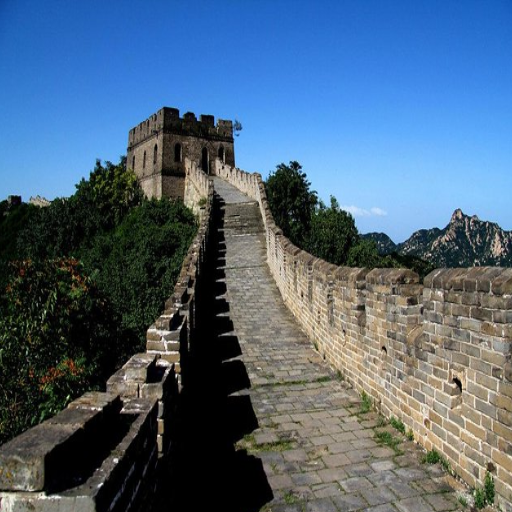
Comparing Mutianyu vs. Badaling sections of the Great Wall
When choosing between the Mutianyu or Badaling sections of the Great Wall, you should consider several aspects on a private day tour in Beijing.
1. Accessibility
Badaling: The easiest destination is Badaling, which can be reached by public buses or a high-speed train. It is roughly 70 kilometers from the heart of Beijing, and it takes around an hour to get there by car.
Mutianyu: At around 80 kilometers, Mutianyu is further away than Badaling, making it less accessible. It can take up to an hour and a half to arrive, and private cars are the fastest method. Public transport isn’t ideal either; however, it is an excellent location for private cars.
2. Crowds
Badaling: Badaling is, BY FAR, the most famous section. This makes it very crowded, especially during peak season and on weekends.
Mutianyu: Greater experience is obtained at Mutianyu, which has quieter and calmer surroundings, making it less crowded.
3. Scenery and Preservation
Badaling: This location has a steep commercial feel due to it being heavily restored and thus polished. This makes it well-maintained but not as great of an experience.
Mutianyu is quieter and more serene, making it best for photographers. It offers stunning views and is surrounded by beautiful lakes and forests.
4. Technical Details
Infrastructure: Accessibility via cable cars, funicular railways, and wheelchair access.
Mutianyu:
- Elevation: Approximately 540-670m above sea level.
- Length accessible to tourists: 5.4km.
- Infrastructure: Cable cars, chairlifts, and a toboggan slide facilitate descent.
5. Best for:
Badaling is the best option for first-time tourists who want easy access and a good overview of the Wall.
Mutianyu is best for tourists looking for less crowded, more beautiful, and tranquil walks along the wall.
Both parts have distinct benefits, and the balance should be tipped toward personal preference regarding ease, setting, and desired interaction depth.
Best Great Wall tour options from Beijing with private transfer
Badaling Tour with Private Transfer
Accessibility: The most convenient and closest wall section is approximately 70 km from Los Angeles, making it an excellent choice for first-time visitors.
Features: It has wide walkways, fast access by cable cars and pulleys, and is beautifully preserved, with scenic overlooks.
Crowd Levels: Very high, especially during peak tourist seasons.
Best For: Those who value convenience, easiest access, and classic wall experience.
Mutianyu Tour with Private Transfer
Accessibility: A bit over 75 km from Los Angeles; not too bad and a bit quieter.
Features: Restored, family-friendly section with a great view, cable car ride, and toboggan for children.
Crowd Levels: Moderately low overall.
Best For: People looking for fewer crowds and a more tranquil wall exploration.
Both options offer private transfers, providing a cozy and hassle-free trip to the wall. Your decision will be made quickly, depending on your preferences about crowd level, scenery, and the experience you want to enjoy most.
Tips for a perfect guided tour experience at Mutianyu Great Wall
Best Timing: Arriving in the Morning or Late Afternoon is advisable to avoid peak hours and offer an ideal contrast for taking photographs.
Clothes: If you plan on hiking the steep wall sections, dress in comfortable walking shoes with adequate grip. Consider changing into layers in cooler months, as Wall temperatures can vary.
Fees and Availability:
Entrance Fee- Access to Mutianyu Great Wall included- ¥40 for adults, ¥20 for children (may be modified).
Cable Car (Optional)- ¥120 for an excursion; suitable for people who do not want to make steep climbs.
Toboggan Ride (Optional)- ¥100 providing descent from the Wall.
Guides and Tours:
You can book a private tour to acquire detailed historical information and context or hire a licensed tour guide who offers personalized guidance.
Confirm if your guide provides tickets beforehand so you do not have to spend unnecessary time at the gate.
Planning these details and preparing in advance will improve your experience visiting the Mutianyu Great Wall.
What authentic Beijing experiences should be in your private itinerary?
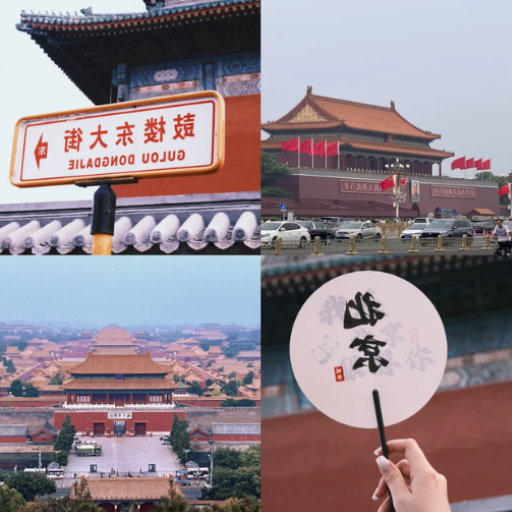
Navigating Beijing’s hutongs by rickshaw with a local guide
Exploring the hutongs of Beijing on a rickshaw with a local guide will suit all your needs, including immersion in the culture, while being incredibly convenient. The hutongs, or narrow alleys in Beijing, are full of stories and offer insight into Chinese culture. Riding on a rickshaw also enables you to cover more areas in less time while the local guide shares and provides excellent information.
Guide Selection: Choose a local guide knowledgeable about the hutongs’ history and society to make your tour memorable.
Tour Duration: Most rickshaw tours last 1-2 hours and allow you to visit famous places like Nanluoguxiang or Shichahai.
Rickshaw Features: During the tour, ask the rickshaw driver if his vehicle is in good condition with comfortable seats and safety belts for a relaxed and safe journey.
Route Customization: You can request a unique route that includes cultural landmarks such as courtyard houses (siheyuan) or significant historical sites.
Booking and Pricing: Always ask what the charge will be before making the reservation so you don’t pay more than you had to. The average prices usually land between 200-400 RMB depending on how experienced the guide is and how long the tour is.
Considering these conditions makes these rickshaw navigations one of the most straightforward and unforgettable explorations of Beijing’s beautiful hutongs.
Exploring the Summer Palace: Beijing’s imperial retreat
Maintained under UNESCO, the Summer Palace, featuring marvelous architecture, incredible landscapes, and rich history, impels visitors to ponder the majestic imperial China. The suggestions below will help maximize your visit to this remarkable destination/Summer Palace.
The Spring and Autumn months are ideal for visiting as the weather is pleasant, the surroundings are picturesque, and there is a lack of tourism compared to the summer months.
Depending on the area visited, tickets cost 30-60 RMB. Online booking is encouraged to avoid waiting in line.
Proper Modes of Travel: Buses Nos. 331 and 726, along with Subway Line 4 and Beigongmen Station, have stops nearby and are, hence, the most convenient Public modes of transport.
Noteworthy Features:
- Wanshou Shan (Longevity Hill): For breathtaking views.
- Kunming Lake: Best for boat rides and photographs.
- Seventeen-Arch Bridge and Marble Boat: Famous historical sites.
Visiting Hours: At least three hours should be set aside to view all the major sights.
Adherence to these simple pointers will help you better appreciate the Beijing Imperial Retreat and its rich history and culture.
Cultural experiences around Beijing with local experts
With local professionals, you can deepen your knowledge of Beijing’s culture, specifically its fascinating traditions. To start, immerse yourself in the following activities:
Traditional Tea Ceremonies: Understand how tea culture is significant in China and its different forms throughout the province. Local guides walk visitors through tea types and their importance in Chinese history.
Calligraphy Workshops: Learn the ancient arts of Chinese calligraphy, including its fine hand strokes with the aid of skilled masters and its metaphorical symbolism.
Hutong Tours: With a local guide, you can learn about old Northern Chinese neighborhoods, their narrow streets, courtyard houses, and shifting patterns of community life.
Culinary Experiences: Take a local cooking class and learn how to prepare specialty dishes, such as the famous Peking Duck and dumplings, while teaching methods, rules, and cooking traditions.
With local experts, all activities focus on interaction, guaranteeing peace of mind when immersing yourself in authentic experiences and culture.
How do you plan the perfect Beijing private sightseeing tour?
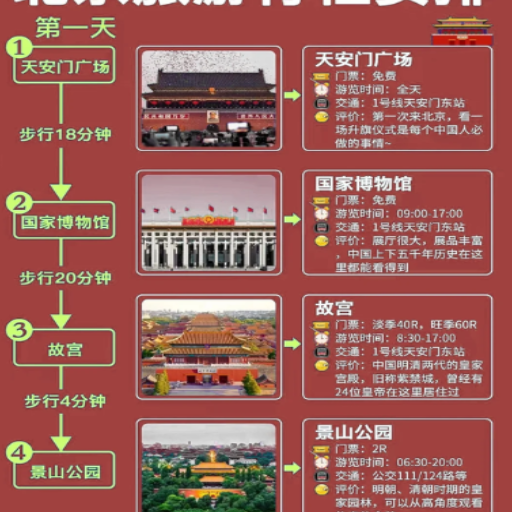
Creating a classic Beijing itinerary for different trip durations
Before preparing for a private sightseeing tour in Beijing, I constantly analyze my time for the trip and try to balance the city’s iconic places with its cultural experiences. Here is a breakdown of the duration of the trip:
1-Day Tour: For a single day, I look at highly recommended places such as the Forbidden City and Tiananmen Square and a half-day trip to the Great Wall (Mutianyu Section). This itinerary requires adequate travel time between locations; hence, starting early and having private transportation is the best for these cases.
2-Day Tour: During two days, I can also visit the Temple of Heaven in the morning and the Hutong neighborhoods, which offer a more traditional view of Beijing’s historical alleys. I suggest including the Summer Palace on the second day and a Peking Opera show in the evening. From a more technical point of view, guides on the local area can provide better information if skip-the-line tickets have already been purchased.
3+ Day Tour: The Things We Do Schedule – In addition, for the days longer than three, there is an entire extra day full of cultural experiences, such as a cooking class, visits to the 798 Art District, and even a daytime trip to the Ming Tombs and Olympic Park in Beijing. This longer duration allows tour members to include options such as leisurely photography tours or tea ceremonies and undertake the tour at a relaxed pace.
As such, the tour aims to fulfill the given timeframe while integrating cultural and historical features relevant to that time. It is fully compliant with logistical considerations to maximize the participant’s benefit.
It is the best time to visit Beijing attractions and avoid crowds
Beijing experiences low footfall in its tourist attractions from March to May and September until the first half of November. The best time to travel is during the shoulder months when the weather is moderate, spring has blossomed, and autumn showcases beautiful, colorful leaves. Travel during these months is also more pleasurable as there are fewer tourists compared to the summer months and national holidays.
From a technical standpoint, these months also enable the relaxed convenience of shorter queues at sketchy travel sites like the Great Wall or the Forbidden City. Tourism in China is becoming more affordable, meaning that accommodations and transport for tourists are roughly cheaper during off-season periods. These months provide ideal shooting conditions for picture lovers because clearer skies and smoother lighting allow for great photographs. Maximizing pleasure, value, and efficiency in a journey to Beijing is better appreciated if itineraries are aligned with less busy months.
Combining Beijing city tours with day trips to surrounding sites
Incorporating a day tour around Beijing’s city is a great way to maximize your travel activities. I recommend planning day trips to Great Wall’s Mutianyu or Simatai sections since they are very close to the city. During the less peak hours of the day, these spots are known for having breathtaking views.
From a technical standpoint, timing is critical. Leaving as early as possible can help avoid large crowds and traffic. For your transportation needs, a private car or small group tour is far more efficient than relying on public transport, which can be slower and more complicated. In addition, plan your return after the busiest parts of the day in Beijing. Be sure to wear appropriate clothing during the colder months since temperatures at the Great Wall can be very low. Adding these excursions with the city tours diversifies your experience while also refreshing you with beautiful nature after urban exploration.
What makes a Beijing private tour better than a group China tour?
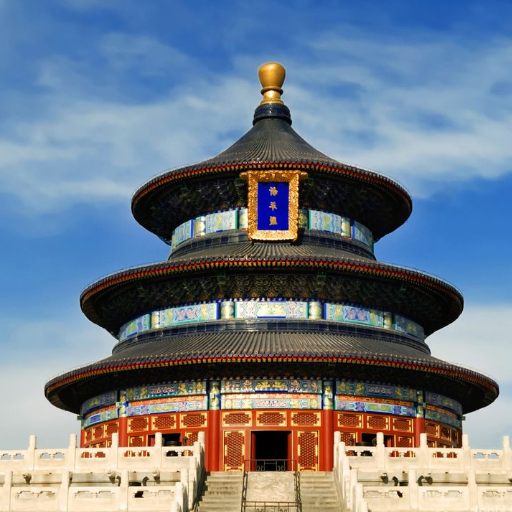
Advantages of personalized itineraries with Beijing private tours
In my opinion, private tours around Beijing offer an excellent level of flexibility, which is provided by very few private tours. Private tours can be altered according to your preferences, unlike group tours, where the itinerary is fixed. This ensures that all the tours you wish to appreciate are for cultural activities, culinary activities, or historical landmarks. For instance, if you want versatile private tours of the Great Wall, you will be free to spend as much time as you desire, unlike group tours that are strictly regulated.
Transportation Efficiency: The dedicated vehicle and driver associated with a private tour significantly reduces travel time by eliminating holdups caused by group logistics and public transport. This enables better movement between locations.
Seasonal and Weather Adaptability: Private tours can effortlessly modify anticipated activities based on weather patterns, such as refraining from outdoor activities during heavy rainfall or winterizing operations in the winter months.
Personalized Guides: With a private tour guide, there is room for further elaborations, provisions for cultural information, and other personal touches than what the client had in mind.
Optimized Timing: Power hours and congested times are set aside due to possible collaborative control over time slots for leaving and returning, directly improving the experience.
The absence of rigidity in these elements contributes the most to making private tours better for sightseeing in Beijing.
Cost comparison between private and group Beijing day tours
The difference between private and group Beijing day tours is primarily due to personal preferences and group size. Though private tours seem more expensive initially, they are valuable in terms of attention, experience, and time efficiency. For instance, private tours may not appear to have as many costs indirectly due to the reduced travel time, avoidance of peak times, and lower ticket availability that comes with some attractions.
Meanwhile, people in group tours pay less on average for transport and guiding since these expenses can be shared amongst many travelers. However, sometimes, a larger group may increase the chances for delays that could limit the duration and flexibility of the tour. Therefore, a private tour has higher transportation costs because they require dedicated vehicles instead of shared ones in group tours that tend to spend less on fuel and bore the costs.
Ultimately, it depends on your priorities, such as whether you desire a personal timetable, dedicated resources, or shared options. The cost-effectiveness of each selection will differ for each person.
Flexibility and customization options with private tour guides
I can customize a private tour to best suit my desired goals and preferences because private tour guides have no restrictions and provide exceptional flexibility. They provide excellent assistance regarding how I would like to set the itinerary, the speed of the tour, and what activities I would like to engage in. The choice of a private car helps in traveling efficiently and on time, which improves comfort and reduces wasted time. However, The disadvantage of this would be increased prices compared to the shared option on group tours. However, the additional expense is well worth it due to the personalized service; for instance, I can visit less popular sites or alter the itinerary to spend more time in my preferred locations.
A new calculation from the technical point of view adds to, and simultaneously diminishes, time allocated (maximized efficiency), itinerary control (every type of customization is possible), and resource allocation (vehicles that require more fuel are not economical). In any case, these parameters considerably change the experience, shifting it from a pre-determined level of quality and satisfaction to an unstandardized one.
Frequently Asked Questions (FAQs)
Q: Which hutong neighborhoods should be prioritized in a private tour of Beijing?
A: Visitors looking for the best authentic experiences should head to Nanluoguxiang and Shichahai. These neighboring districts offer beautiful glimpses into Beijing’s past through ancient alleyways. On a private tour, you will ride rickshaws around the narrow streets, meet local families, take paper-cutting lessons, and feast on dumplings. A lot of English-speaking tour guides in Beijing have special arrangements for courtyard homes that are not accessible to most tourists. The hutong culture represents Beijing’s culture and history embedded in the Yuan Dynasty. This makes it a must-see for any first-time tourists visiting Beijing.
Q: How can I plan the perfect one-day itinerary in Beijing if I am pressed for time?
A: On your day trip to Beijing, prioritize the following: start at the Forbidden City (reserve 2-3 hours), visit Tian’anmen Square, and spend your afternoon at the Summer Palace or Temple of Heaven. You will need a private tour guide and driver so they can help you navigate the traffic and crowd. If you are taking a layover tour from Beijing Capital International Airport, explain your flight times to your guide so they can prepare appropriately. Many top-rated private guides in Beijing have pre-planned itineraries for one day in the city to help travelers in the town for a short time.
Q: How can a person best enjoy the Great Wall as part of a Beijing tour?
A: The Great Wall is a must-go for any Beijing tour package. If you want to avoid large crowds while still having a good experience, select the Mutianyu section over the often crowed Badaling Great Wall section. A private guide can get you there early in the morning to avoid tourists and heat. If you’re a photography lover, Jinshanling has breathtaking views that are perfect for sightseeing. Your Beijing tour guide can arrange private transportation from your Beijing hotel, which saves about 1.5 hours and is much better than public transport. Some tour options from Beijing include hiking between sections of the wall or even camping on the wall itself. I plan to spend at least half a day on this portion because it may be the most impressive attraction in Beijing.
Q: What monuments reveal that Beijing is an ancient city in China?
A: The ancient city of Beijing, over 3,000 years old, still holds much historical evidence. Look past the Forbidden City to the Temple of Heaven, where the Ming and Qing emperors offered prayers for abundant harvests. The Lama Temple is a reminder of the religious diversity in Beijing, and the Summer Palace is an example of imperial landscape design. For Beijing’s military history, the Ming Tombs are a must-see. A private tour in Beijing can connect these places with insightful commentary about the region’s dynasties, architecture, and culture. Beijing has been of great importance historically, and the National Museum of China, located by Tian’anmen Square, showcases over a million historical artifacts. Collectively, these locations explain the significance of Beijing to China’s identity.
Q: Which food experiences are a ‘must’ for a Beijing private tour?
A: Eating Peking duck in either Dadong’s or Quanjude Restaurants is a must on your trip to Beijing. After this iconic meal, a private guide can take you to some of the local eateries located in hutong regions that are not accessible to tourists. You could also have a private lesson for making dumplings included in your Beijing tour plan. Wangfujing Snack Street has these foods for daring foodies, while Guijie (Ghost Street) is known for its crayfish served in spicy sauce. Your tour guide on the private tour of Beijing can bring a menu to you and tell you what the dish is and how it is prepared. Tea lovers should add a traditional tea ceremony to enjoy one more piece of the city’s cultural legacy that would match a day exploring Beijing’s sites.
Q: What is the best way to merge a Beijing tour with other places in China?
A: Many tourists use Beijing as the primary stop of their trip to China. You can take high-speed trains from Beijing to Xi’an (6 hours) for the Terracotta Warriors or to Shanghai (5.5 hours) to see the modern part of China. For the best natural scenery, don’t forget to visit Guilin for its limestone karsts and river cruises. All of these can be done with the help of your local Beijing tour guide. All the major Chinese cities have direct flights from Beijing Capital International Airport. So, you might want to spend 3-4 days in Beijing and then go wherever you want to after extending your trip with other regions, back to other parts of China, starting with the fantastic Beijing and then filling the rest of the time with different parts of this mesmerizing country.
Q: Is there anything special about transportation for a top private tour of Beijing?
A: All private tours come with a car plus a driver, which is extremely helpful for most people. Beijing’s subway is highly efficient, though often packed during peak hours. While public transport options are cheaper, the language barrier is a massive problem for people who do not speak Chinese. Airport transfers are a must-do – the journey from downtown to the Beijing Capital International Airport takes 45-90 minutes, depending on traffic. A car is essential for day excursions from Beijing to the Great Wall or other distant sites. If you would prefer to use the subway to commute during your stay, your private guide can help you navigate the Beijing subway system. Always inform the tour guide and driver if you have any special needs, such as English speaking.
Q: Which shopping activities should be blended into a personalized tour of Beijing?
A: Beijing has many shopping options, from hyper-modern to ancient. While Panjiayuan Antique Market is the ideal place to pick up souvenirs, the Silk Market (Xiushui) sells everything from silk clothes to custom-made suits. Wangfujing and Sanlitun are great for luxury shopping. A private tour guide in Beijing will ensure you get the best out of these locations and offer their services with negotiation for prices, a common practice in markets. Some tours include cloisonné, jade, or pearl government factories for authentic arts and crafts, while others do tea shops near Lama Temple selling some of the best Chinese teas. Most Beijing travel packages allow changing shopping options; local guides will help ship larger items back to your country.
Q: What should first-time visitors know before planning a Beijing tour?
A: First-time visitors to Beijing should set aside at least three to four days to see the city’s highlights. Beijing has four distinct seasons; spring (April – May) and fall (September – October) have the best weather. Summers can be hot and humid, and winters are cold, but the snow scenes along the Great Wal are stunning. Most hotels in Beijing have decent facilities, but check that they are located centrally. Many young people in Beijing speak English, but having a private guide who can translate is priceless, especially in restaurants and markets. Air quality fluctuates throughout the year, so look into pollution forecasts. Due to its massive size, there’s a lot of space between important places, meaning a careful plan with a guide and a driver will improve your visiting experience.
Q: Have travelers on short layover tours from Beijing airport had any extraordinary experiences?
A: You can cover much ground during a 6-8 hour layover at Beijing Capital International Airport. Private guides offer specialized packages focusing on areas close to the airport, like the 798 Art District or the Olympic Park. Within 9-12 hours, it is possible to visit the Mutaiyu Great Wall section. Ensure your guide manages your time well and is familiar with the terminal procedures. Depending on your nationality, visa-free transits of 24-144 hours may apply, verify with the guide before hand. If you book a private guide, you will be met at the arrival gate, helping you make the most of your time. In most instances, these condensed experiences of Beijing are enough to inspire travelers to plan a more extended trip in the future.